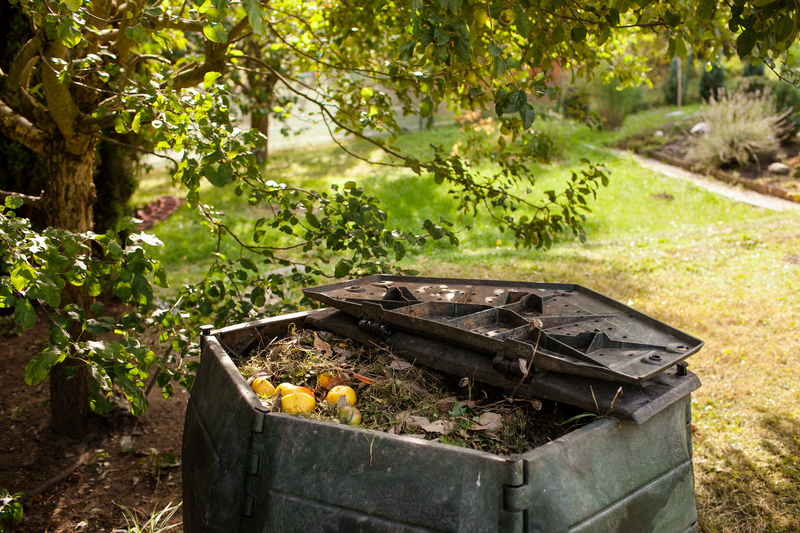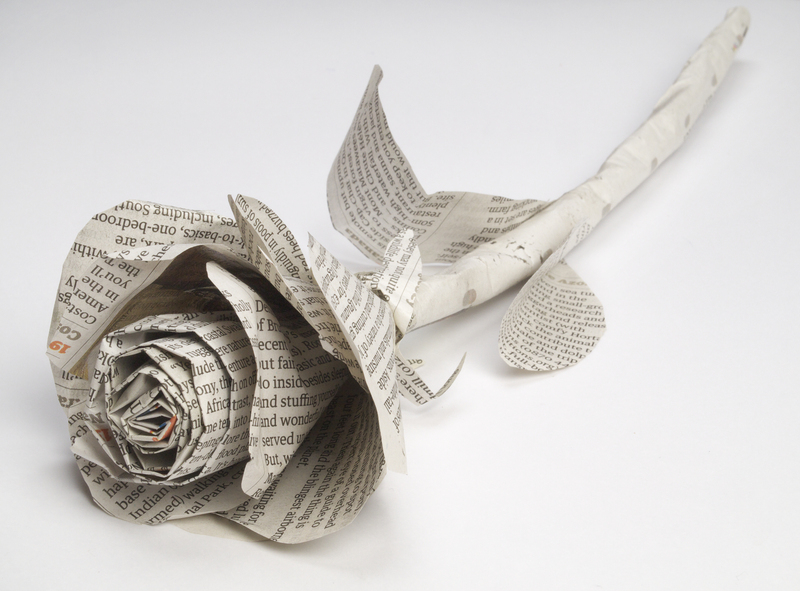The Art Of Upcycling: Transforming Old Goods Into Something Stylish And New
Upcycling is more than just a creative trend - it's a powerful, eco-friendly movement that encourages us to make the most of what we already have. With growing environmental concerns and the increasing importance of sustainable living, learning about the art of upcycling can not only add style and personality to your home but also help reduce waste. This comprehensive guide will introduce you to the world of upcycled creations, inspiring you to transform old items into stylish, functional, and unique pieces.
What Is Upcycling?
Upcycling, often known as creative reuse, is the process of taking discarded, unwanted, or old goods and transforming them into products of higher quality or value. Unlike recycling, which typically involves breaking materials down into their base components, upcycling retains the original item's structure, enhancing or repurposing it in imaginative ways. From turning worn-out jeans into trendy bags to converting antique doors into charming coffee tables, the possibilities of upcycling are practically endless.

Why Is Upcycling Important?
- Environmental Impact: Upcycled goods help to reduce the volume of waste sent to landfills, prolonging the life of existing materials and conserving natural resources.
- Economic Benefits: Transforming old goods can save money compared to buying new products. Sometimes, upcycling can also create opportunities for small businesses and artists.
- Personal Satisfaction: Crafting something new and beautiful from something old is rewarding. The items you create through the art of upcycling are unique and often hold sentimental value.
- Promotes Creativity: Upcycling encourages creative thinking and problem-solving as you find innovative ways to repurpose items.
- Home Aesthetics: Handmade upcycled pieces can add character, style, and originality to your living space that mass-produced items cannot match.
Upcycling Versus Recycling
While both recycling and upcycling are forms of waste management, they are fundamentally different approaches. Recycling typically requires significant energy to process materials, often resulting in products of lesser quality. In contrast, the art of transforming old goods through upcycling focuses on creatively reusing items, often without the need for energy-intensive processes, and with the goal of achieving a higher quality or value.
Popular Upcycling Techniques And Project Ideas
Whether you're a seasoned DIYer or just starting out, there are countless upcycling techniques and project ideas you can try at home. Here are some inspiring ways to breathe new life into old goods:
Furniture Makeovers
- Pallet Projects: Shipping pallets can be turned into rustic coffee tables, garden planters, or wall shelves.
- Old Drawers: Repurpose old dresser drawers into under-bed storage units, planters, or quirky wall shelves.
- Chairs and Sofas: Give outdated or worn furniture a new lease on life with fresh upholstery, paint, or creative modifications.
Textile Upcycling
- T-Shirts: Convert old tees into tote bags, braided rugs, or cushion covers.
- Denim Jeans: Worn-out jeans can become everything from bags to patchwork quilts or stylish home decor accents.
- Sweaters: Turn shrunken or holey sweaters into cozy mittens, hats, or pillow covers.
Glass And Jar Repurposing
- Mason Jars: Use them as chic storage containers, candle holders, or even as mini herb gardens.
- Wine Bottles: Cut and sand them to make elegant drinking glasses, vases, or string lights.
- Glass Jars: Paint or decorate them to create stylish bathroom organizers or kitchen canisters.
Upcycling Electronic Waste
- CDs and DVDs: Craft mosaic art, coasters, or shimmering garden decor.
- Keyboard Keys: Create funky jewelry or fridge magnets.
- Circuit Boards: Turn into wall art or unique notebook covers.
Repurposing Wood And Metal
- Doors and Window Frames: Transform old doors into statement headboards or vintage tables, and window frames into decorative mirrors or photo displays.
- Metal Cans: Use them as planters, lanterns, or desk organizers.
- Wooden Crates: Stack and fasten crates to make modular bookshelves, shoe racks, or side tables.
How to Start Your Own Upcycling Project: Step-By-Step
- Identify Items To Upcycle: Look around your home or local thrift stores for items that are no longer needed or are past their prime.
- Research And Plan: Search for inspiration and tutorials on platforms like Pinterest, YouTube, and upcycling blogs to spark your creativity.
- Gather Materials And Tools: Assemble everything you'll need, including basic tools (like glue, scissors, sandpaper, and paint) and any new materials for your project.
- Create A Workspace: Set up a clean and organized area where you can work safely and comfortably.
- Execute With Care: Take your time during the transformation process. Properly clean and prep items before starting, and pay attention to detail for the best results.
- Finish And Enjoy: Once complete, showcase your upcycled creation and enjoy the satisfaction of having prevented waste while elevating your home's style!
How Upcycling Contributes to Sustainability
The art of upcycling has a major role in promoting sustainability and a circular economy. By reusing materials and turning old goods into something stylish and useful, we:
- Reduce the extraction and processing of raw materials
- Lower our carbon footprint and conserve water and energy
- Minimize landfill waste and pollution
- Encourage a shift in consumer mindset from disposable to responsible consumption
Sustainable upcycling represents a shift in how we view everyday objects - not as disposable, but as raw materials with ongoing value.
Styling Upcycled Pieces: Tips To Make Old Goods Look Fabulous
One common misconception is that upcycled items don't look as polished or chic as new ones. In reality, with the right touch, they can become the highlight of your interior. Here are some tips for styling upcycled goods:
- Unify With Color: A fresh coat of paint can instantly modernize mismatched furniture or decor, creating a cohesive look in your space.
- Mix and Match: Don't be afraid to blend upcycled pieces with modern items; this contrast can add personality and depth to your decor.
- Add New Hardware: Updating handles, knobs, and legs can breathe new life into old furniture.
- Layer Textures: Combine old wood with soft textiles, glass, or metals to create visual interest.
- Refinish Surfaces: Sanding, varnishing, or adding decorative touches can elevate the look of secondhand goods.
Upcycling in Fashion: Turning Old Clothes Into New Trends
The art of upcycling fashion is revolutionizing the way we view our wardrobes. Designers and hobbyists alike are breathing new life into old clothes, minimizing fashion waste while setting new trends. Here are a few ways upcycling is transforming fashion:
- Patchwork: Creating eye-catching designs by combining fabric scraps from multiple garments.
- Embroidery: Adding personalized details and covering stains or holes with decorative stitching.
- Denim Rework: From distressed jeans to cropped jackets, denim is endlessly versatile for upcycling projects.
- Accessorizing: Making scrunchies, bags, and jewelry from material remnants.
Major brands are also embracing fashion upcycling, proving that stylish, on-trend looks can come from unexpected - and previously unwanted - sources.
Creative Upcycling Ideas For Every Room
Need inspiration for a specific part of your home? Try these room-by-room upcycling concepts:
Living Room
- Turn a ladder into a blanket rack or bookshelf.
- Convert wooden crates into storage and coffee tables.
- Upcycle old frames into wall art displays.
Kitchen
- Transform glass jars into stylish storage for pasta, grains, or snacks.
- Repurpose tin cans as utensil holders or planters for fresh herbs.
- Use an old door or window frame as a chalkboard message center.
Bedroom
- Make a headboard from reclaimed wood, doors, or fabric scraps.
- Use vintage suitcases as nightstands or under-bed storage.
- Turn broken jewelry into decorative curtain tiebacks.
Garden
- Convert pallets into vertical gardens for herbs or flowers.
- Repurpose old boots or teapots as whimsical planters.
- Use metal colanders or baskets for hanging plants.
Success Stories: Upcycling Artists and Brands
Many designers, artists, and eco-entrepreneurs are proving that the art of upcycling can also be a thriving business. Examples include:
- TerraCycle: A global leader in collecting and upcycling typically non-recyclable waste.
- REmade in Britain: An online marketplace featuring diverse upcycled goods from UK artisans.
- The Ragged Priest: A fashion brand specializing in upcycled and reworked clothing.
- Piet Hein Eek: Celebrated Dutch designer known for luxury furniture made from scrap wood.
These pioneers and countless independent creators demonstrate how stylish upcycled goods can be both functional and fashionable, inspiring others to join the movement.
Upcycling Tips For Beginners
If you're new to the art of upcycling, starting can feel daunting. Keep these tips in mind to make the process easier and more enjoyable:
- Start Small: Beginner projects like turning jars into organizers or revamping a picture frame are easy ways to build confidence.
- Embrace Imperfection: Handmade upcycled items often have quirks - celebrate these as part of their charm!
- Use Online Resources: Leverage online tutorials, blogs, and forums for inspiration and helpful advice.
- Invest In Basic Tools: A few essential tools (scissors, glue, screwdriver, paintbrush) will go a long way.
- Prioritize Safety: When working with paints, tools, or sharp objects, always follow safety precautions and guidelines.

The Future Of Upcycling: A Brighter, Greener World
As environmental awareness grows, so does the popularity and necessity of upcycling. Cities and organizations around the world are hosting upcycle workshops, swap meets, and maker spaces, empowering communities to transform waste collectively. Brands and consumers alike are increasingly recognizing the benefit of extending an item's life cycle and making sustainability stylish.
By embracing the art of upcycling in your daily life, you're not only contributing to a healthier planet but also expressing your individuality and creativity. Whether you're repurposing a single item or embarking on a room-wide transformation, each effort makes a difference. What will you upcycle next?
Conclusion: Embrace The Art Of Upcycling Today
The art of upcycling is a journey of discovery, innovation, and sustainable living. By transforming old goods into something stylish and new, you reduce waste, promote creativity, and enjoy truly unique items tailored to your taste. So next time you're about to toss something out, take a moment to imagine what it could become - and join the upcycling revolution!
Ready to get started? Explore upcycling inspiration online, visit local flea markets for hidden treasures, or gather friends and family for an upcycling workshop. The planet - and your home - will thank you!
